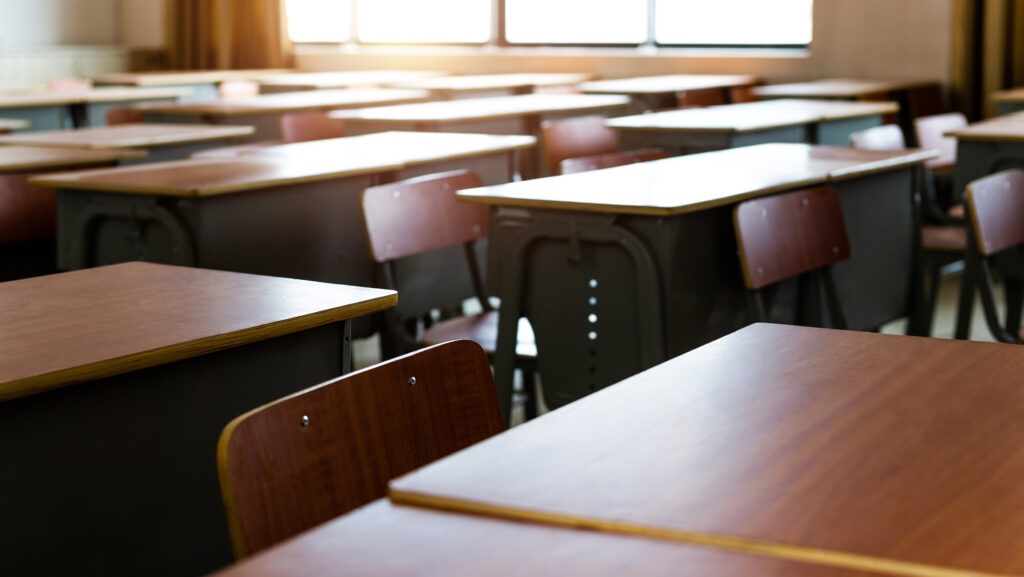Arizona is considering expanding its Empowerment Scholarship Account program, an education savings account program (ESA) that can be used by parents to pay for tuition and fees at private and parochial schools.
Under the proposal, ESA funds could also be used to pay for textbooks, online education, education therapies, private tutoring, and to cover the fees required to take national standardized achievement tests, such as the SAT and ACT. Unused funds could be rolled over each year and used to pay tuition and fees for postsecondary education.
If the program is approved by legislators, all Arizona students would become eligible for the program by the 2020–21 school year. Eligibility would phase in incrementally and in a staggered fashion, starting with students in kindergarten, 1st grade, 6th grade, and 9th grade in the 2017–18 school year.
Under the current version of the program, students are eligible for an ESA if they have special needs, have been adopted from the state foster care system or are with a family that has an adoption case plan open, have an active-duty military parent or a parent who was killed in the line of duty, live on one of the state’s Indian reservations, or attended a public school or lived within a school district that received a “D” or “F” grade on the state’s accountability report card. First-time ESA students also must have attended a public school full-time for 100 days in the previous fiscal year or are entering kindergarten. About 22 percent of Arizona students are currently eligible for an ESA.
An audit of the Empowerment Scholarship Accounts program released in June 2016 by Arizona’s Office of the Auditor General found fraud was committed in less than 0.8 percent of all program distributions. According to an Arizona Department of Education public information officer, this audit shows the staff of the Empowerment Scholarship Accounts program is doing “a pretty outstanding job keeping up with the changes in the program and that the program is safeguarding taxpayer dollars as best they can.”
Satisfaction with the program is extremely high among participating parents. A 2013 survey by EdChoice found “no parent responded as neutral or reported any level of dissatisfaction with the accounts [emphasis added]. Those results show high levels of satisfaction even after accounting for our limited sample size and margin of error.”
A separate EdChoice study published in February 2016 examined what Arizona parents have been purchasing with their ESA funds and found just 83 percent of ESA funds were used for private school tuition. Seven percent were used to pay for tutoring services. Twenty-eight percent of ESA account holders used their funds for multiple educational services. Thirty-one percent of all awarded funds were unspent throughout the period studied, with families accumulating a total of $67,000 for college savings plans.
Enacting this expansion to the Empowerment Scholarship Account program would keep the Grand Canyon State at the forefront of the education choice movement, and would give all Arizona families a greater opportunity to meet each child’s unique education needs. When parents are given the opportunity to choose, every school must compete and improve, which gives more children the opportunity to attend a quality school.
The following provides more information about education savings accounts and education choice.
A Win-Win Solution: The Empirical Evidence on School Choice (Fourth Edition)
https://heartland.org/publications-resources/publications/a-win-win-solution-the-empirical-evidence-on-school-choice-fourth-edition?source=policybot
This paper by the Friedman Foundation for Educational Choice details how a vast body of research shows educational choice programs improve academic outcomes for students and schools, saves taxpayers money, reduces segregation in schools, and improves students’ civic values. This edition brings together a total of 100 empirical studies examining these essential questions in one comprehensive report.
2016/17 School Choice Report Card
https://heartland.org/publications-resources/publications/201617-school-choice-report-card
This report card published by the American Federation for Children scores 27 active non-special-needs voucher, scholarship tax-credit, and education savings account programs against ideal standards for program quality. The report is an excellent tool policymakers and researchers can use to help improve education programs and maximize student participation.
The Education Debit Card II
https://heartland.org/publications-resources/publications/the-education-debit-card-ii-what-arizona-parents-purchase-with-education-savings-accounts?source=policybot
In this follow-up to an earlier EdChoice study, the authors examine additional data from the Arizona Empowerment Scholarship Account program. The program allows families to spend their education dollars on a variety of options, including tuition for private and parochial schools, private tutoring, and learning therapies. The report reveals current ESA families’ expenditures and how spending trends have changed since the previous report was published.
Exploring Arizona’s Private Education Sector
https://heartland.org/publications-resources/publications/exploring-arizonas-private-education-sector?source=policybot
This is the seventh installment in EdChoice’s School Survey Series. In this edition, the researchers surveyed Arizona private school leaders about the state’s educational choice programs, including Empowerment Scholarship Accounts. The school leaders were also surveyed about school enrollment capacity, tuition rates, student demographics, and more. This report brings together those results along with U.S. Department of Education data to paint a detailed picture of Arizona’s private-education sector.
Research & Commentary: Indiana School Choice Parental Satisfaction Should Lead to More School Choice
https://heartland.org/publications-resources/publications/research–commentary-indiana-school-choice-parental-satisfaction-should-lead-to-more-school-choice?source=policybot
In this Research & Commentary, Heartland Policy Analyst Tim Benson examines an expanded, follow-up study to a 2014 report by EdChoice that examines why Indiana parents choose to take advantage of the state’s Choice Scholarship Program voucher and use it to send their children to private schools.
Competition: For the Children
https://heartland.org/publications-resources/publications/competition-for-the-children
This study from the Texas Public Policy Foundation claims universal school choice results in higher test scores for students remaining in traditional public schools and improved high school graduation rates.
Recalibrating Accountability: Education Savings Accounts as Vehicles of Choice and Innovation
https://heartland.org/publications-resources/publications/recalibrating-accountability-education-savings-accounts-as-vehicles-of-choice-and-innovation?source=policybot
This Special Report from The Heritage Foundation and the Texas Public Policy Foundation explores how education savings accounts expand educational opportunities and hold education providers directly accountable to parents. The report also identifies several common types of regulations that can undermine the effectiveness of the program and how they can be avoided.
The Fiscal Effects of School Choice Programs on Public School Districts
https://heartland.org/publications-resources/publications/the-fiscal-effects-of-school-choice-programs-on-public-school-districts?source=policybot
In the first-ever study of public school districts’ fixed costs in every state and Washington, DC, Benjamin Scafidi concludes approximately 36 percent of school district spending cannot be quickly reduced when students leave. The remaining 64 percent, or approximately $8,000 per student on average, are variable costs, changing directly with student enrollment. This means a school choice program attaching less than $8,000 to each child who leaves a public school for a private school actually leaves the district with more money to spend on each remaining child. In the long run, Scafidi notes, all local district spending is variable, meaning all funds could be attached to individual children over time without creating fiscal problems for government schools.
How School Choice Programs Can Save Money
http://www.heritage.org/Research/Education/wm727.cfm
This Heritage Foundation study of the fiscal impact of voucher programs notes Washington, DC vouchers cost only 60 percent of what the city spends per pupil in government schools. The study estimates if the states with the top eight education expenditures per pupil adopted voucher programs similar to the Washington, DC program, they could save a combined $2.6 billion per year.
How School Choice Can Create Jobs
https://heartland.org/publications-resources/publications/how-school-choice-can-create-jobs?source=policybot
Examining five South Carolina counties, Sven R. Larson found school choice programs were associated with gains of up to 25 percent in youth self-employment. Larson writes, “School Choice raises academic achievement and reduces the problems and costs associated with high school dropouts. But it also has a decisively positive impact on youth entrepreneurship and could provide a critical boost for the economies of poor, rural counties.”
Nothing in this Research & Commentary is intended to influence the passage of legislation, and it does not necessarily represent the views of The Heartland Institute. For further information on this subject, visit School Reform News, The Heartland Institute’s website, and PolicyBot, Heartland’s free online research database.
The Heartland Institute can send an expert to your state to testify or brief your caucus; host an event in your state; or send you further information on a topic. Please don’t hesitate to contact us if we can be of assistance! If you have any questions or comments, contact Nathan Makla, Heartland’s state government relations manager, at [email protected] or 312/377-4000.




